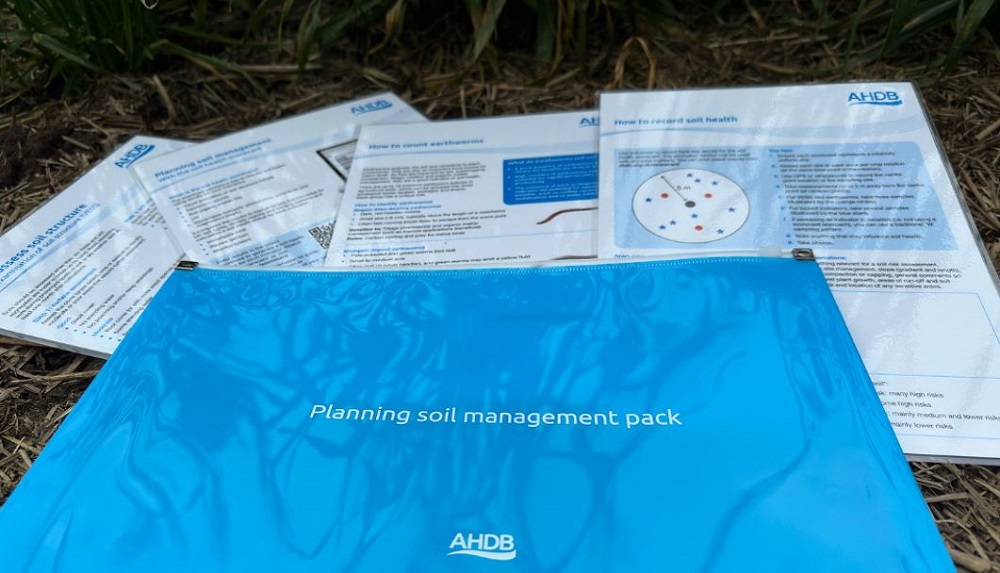- Home
- Knowledge library
- The soil health scorecard
The soil health scorecard
The scorecard provides a framework to monitor soil health on a rotational basis.
Scorecard introduction
The Excel-based tool uses soil analysis results for core soil health indicators and compares them to typical ranges for UK soil types and climate regions (benchmarks).
Scorecard indicators
- Soil structure – using VESS (Visual Evaluation of Soil Structure).
- pH.
- Extractable nutrients (phosphorus, potassium and magnesium).
- Earthworms.
- Soil organic matter.
A completed scorecard automatically produces a 'traffic-light' snapshot of soil health to guide your management decisions.
Benchmarks
Our protocols documents provide detailed guidance on soil sampling and the benchmarks for the soil health indicators. Due to variations in the approaches required across GB regions, protocols for England and Wales, and Scotland are available.
Soil health scorecard protocol (England and Wales)
Soil health scorecard protocol (Scotland)
The benchmarks are applicable to mineral topsoils under crops and lowland grassland. They are not applicable to upland grass/semi-natural systems or peaty/organic soils (those with more than 20% organic matter to 40cm depth).
Walkthrough video (1/4): introduction
Scorecard data
The tool uses two types of data:
- Site information, such as the sample location and date.
- Soil assessment results for the indicators.
Walkthrough video (2/4): data entry
Scorecard results
A scorecard, populated with soil assessment data, automatically assigns a status to each soil health indicator:
- Investigate (red)
- Review (amber)
- Monitor (green)
The tool also features management tips to help you improve the overall condition of your land.
Walkthrough video (3/4): results
Scorecard in Scotland
Although many elements are the same as the scorecard for England and Wales, Scotland has different approaches to nutrient analysis and soil organic matter benchmarking.
This video describes these differences and demonstrates the James Hutton Institute’s SoilFinder database, which can be used to help interpret soil organic matter (loss on ignition) results.
How to use the scorecard in Scotland
Planning soil management pack
Use this form to order a planning soil management pack
The waterproof pack (wallet) contains several information sheets to help you get started with the soil health scorecard in the field.
It includes the How to record soil health sheet publication to help you record field-site results and observations. The publication format follows that of the Excel scorecard (making it easier to record and enter results).
Download the How to record soil health sheet
The pack also contains resources to help you perform a VESS and assess earthworm populations.
How to perform a visual evaluation of soil structure (VESS)
Other resources
The routine assessments to help you understand your soils better
 AHDB
AHDB
 on a table.JPG) AHDB
AHDB
Optional indicators (microbial activity)
The size and activity of soil microbial biomass can be used to help indicate soil-health status.
The standard assessment method uses hazardous reagents (chloroform extraction) and is not offered by the main commercial laboratories in the UK.
The scorecard is based on two alternatives (already used in commercial laboratories).
Potentially mineralisable nitrogen (PMN): a measure of the amount of nitrogen readily decomposed under controlled (anaerobic) conditions.
Solvita® respiration burst (CO2-C): a measure of the amount of carbon dioxide (CO2) released when a dried soil is rewetted.
Scorecard research
In the 'How a soil health scorecard is revolutionising field experiments' video, Anne Bhogal, an ADAS soil scientist, explains how the scorecard was used in long-term experiments to reveal the influence of organic materials, cultivations, drainage and pH on soil health.
Find out about the research behind the soil health scorecard
Note: The research investigated many biological indicators, including potentially mineralisable nitrogen (PMN), microbial respiration (CO2 burst), mesofauna, nematodes and DNA measures of microbial communities.
Assessing soil health using an integrated approach
Scorecard reconnects farmers with soil (CPM article)
Plough vs direct drill: Soil health impact revealed by ‘scorecard’ (news item)

